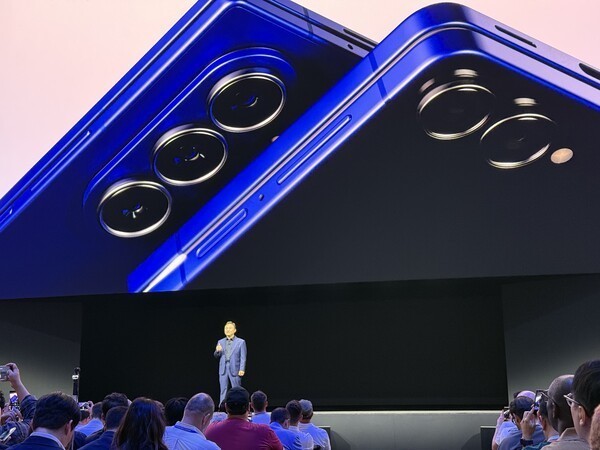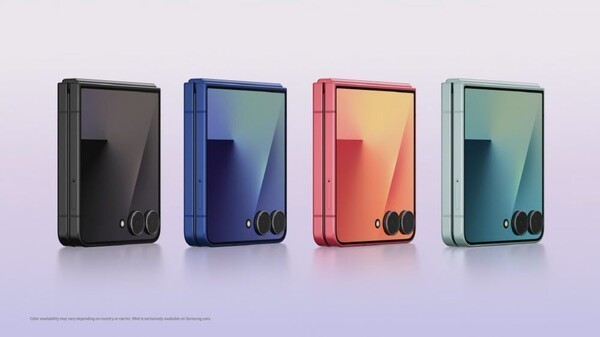Samsung Electronics has raised next year’s foldable smartphone sales target to 7 million units, kicking off a major overhaul of its lineup with a particular focus on revitalizing its stagnating flip-type models.
After losing ground to Motorola in the U.S. market, concerns are growing inside and outside Samsung that “without a flip-type rebound, regaining the global No. 1 position will be difficult.” Many industry watchers say Samsung must restore competitiveness in portability and pricing with next year’s releases.

“7 Million Units” — Samsung’s Big Play to Defend Foldable Market Leadership
According to the electronics industry, Samsung recently finalized its 2026 foldable shipment target at 7 million units, effectively declaring a strategy centered on foldable-driven growth.
This year’s Galaxy Z Fold 7 delivered tangible innovation—25% thinner, 10% lighter—and became a hit, but the flip-type model failed to meet expectations.
In the U.S., Motorola captured 78% of the flip-type market from January to July this year, far outpacing Samsung’s 22%.
A category once considered Samsung’s stronghold has been overturned in just one year. Industry insiders say, “For the MX division to hit 130 trillion won in revenue, the flip segment is the first problem that must be solved.”

The Flip 7’s “Lack of Perceived Change” Creates a Gap…2026 Marks the Start of True Structural Reform
The Galaxy Z Flip 7 released this year trimmed only 1 gram of weight and improved thickness by a modest 5% over the previous model.
In stark contrast to the Fold 7’s dramatic improvements, consumers responded that the flip model “failed to deliver innovation.”
The lack of meaningful improvement in portability—the flip’s core advantage—is widely seen as a key reason Samsung lost its crown in the U.S. market.
Industry observers believe the 2026 flip lineup will be rebuilt around three pillars: thickness, weight, and price.
Inside Samsung, the consensus is clear: “Without noticeable changes, a flip-type rebound is impossible.”
Ultra-Slim, Ultra-Light, and Affordable…The Scenarios for Samsung’s Flip Reorganization
Two main scenarios are circulating for next year’s flip-type models:
Adopting the ultra-slim architecture proven in the Fold 7, creating a new benchmark as the “lightest pocket-friendly foldable ever.”
Diversifying price points and configurations, introducing mid-range flip models in the 1 million-won range, particularly for markets like the U.S. and China where Samsung’s flip performance has been weak.
Since Motorola shook the U.S. market with strong cost competitiveness, analysts say Samsung must also rethink its pricing strategy.
According to an industry insider, “In 2026, Samsung is likely to deploy both an ultra-light flip and a value-oriented flip in select markets.”
Samsung MX’s 2026 Direction:
From Defending Foldable Leadership to Reversing Market Momentum
Samsung aims to make 2026 the “first year of regained foldable leadership,” further differentiating the roles of the Fold and Flip lineups.
The Flip will maximize portability and accessibility, while the Fold will consolidate its position as the premium feature-packed flagship.
The goal is to extend the technological leadership proven by the Fold 7 into the flip segment and diversify products by region, ultimately supporting the MX division’s roadmap toward 130 trillion won in annual revenue.
An industry official said, “Samsung needs a fundamental redesign of its flip models to shift market sentiment in next year’s lineup,” adding, “The 2026 foldable strategy will be a crucial turning point for Samsung to strengthen its global smartphone dominance once again.”
By Shin Jubaekㅣjbshin@kmjournal.net
- Motorola Shakes Up Europe’s Foldable Market as Samsung–Honor Duopoly Falters
- Samsung’s “Tri-Fold” Phone Arrives Dec. 5... A Bold Bid to Rewrite the Foldable Playbook
- Samsung Galaxy S26 Ultra: Why the Punch Hole Got Bigger...A Deep Dive into Samsung’s New Strategy
- Samsung Electronics Launches Galaxy A17 LTE...Affordable Smartphone Equipped with AI
- “Thin but Pricey”...iPhone Air Fizzles Out with Just 3% Market Share, Faces Discontinuation
- Samsung Unveils Galaxy XR, Its $1,799 ‘Project Moohan’ Headset
- Samsung Faces Record AP Procurement Costs as Exynos Becomes Its Best Lifeline
- Samsung Puts AI in the Palm of Your Hand
- Google Phones Can Now Use AirDrop. The Wall Between Android and iPhone Is Finally Cracking

![[동학] 카카오톡 친구탭, 결국 12월 롤백… “격자형 피드는 선택 옵션으로”](https://cdn.kmjournal.net/news/thumbnail/custom/20251126/5517_10550_1119_1763853080_120.jpg)


![[테크 칼럼] 제미나이3, GPT-5.1을 넘다…AI는 이제 ‘일을 대신하는 시대’로 간다](https://cdn.kmjournal.net/news/thumbnail/custom/20251126/5457_10454_4847_1763621329_120.jpg)



![[낭만 테크 시대] AI 대항해 시대](https://cdn.kmjournal.net/news/thumbnail/custom/20251126/5603_10714_4334_1764121414_160.jpg)

